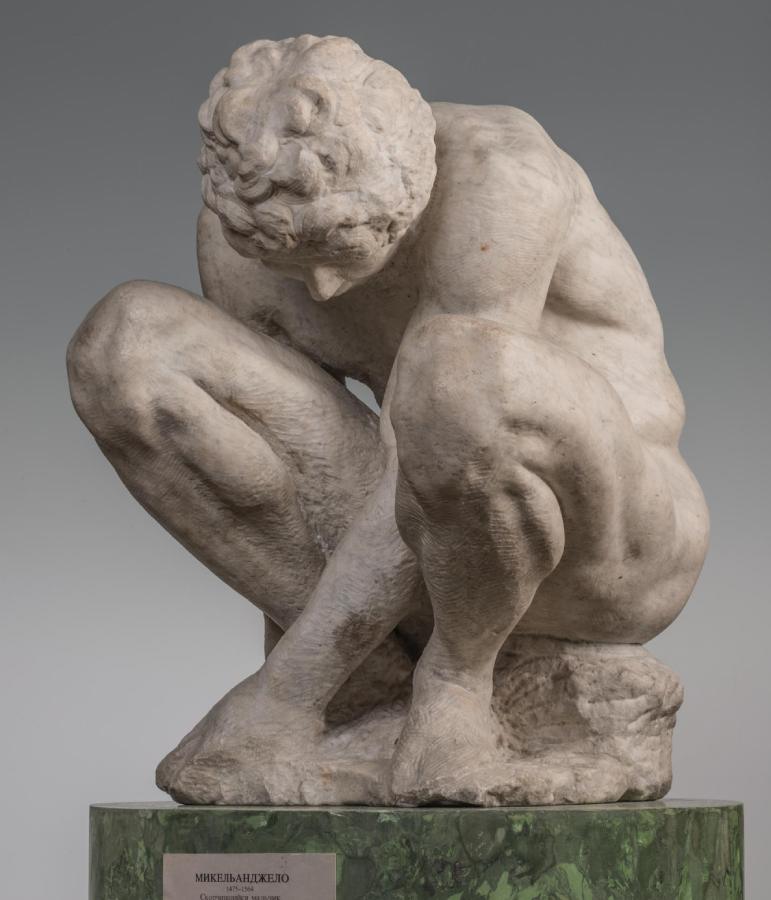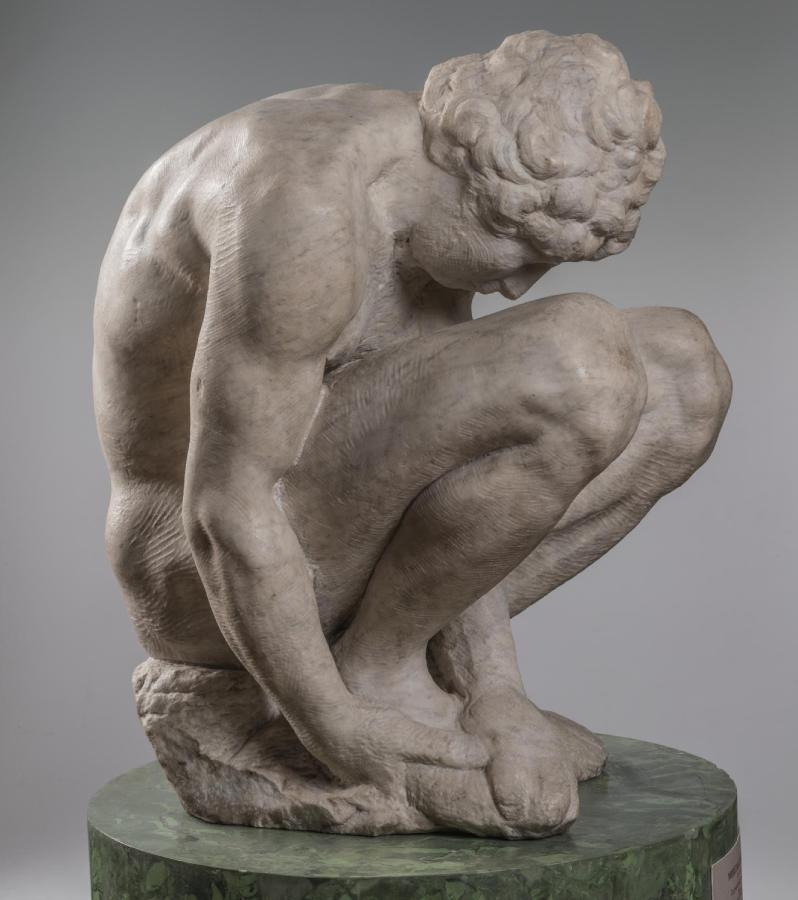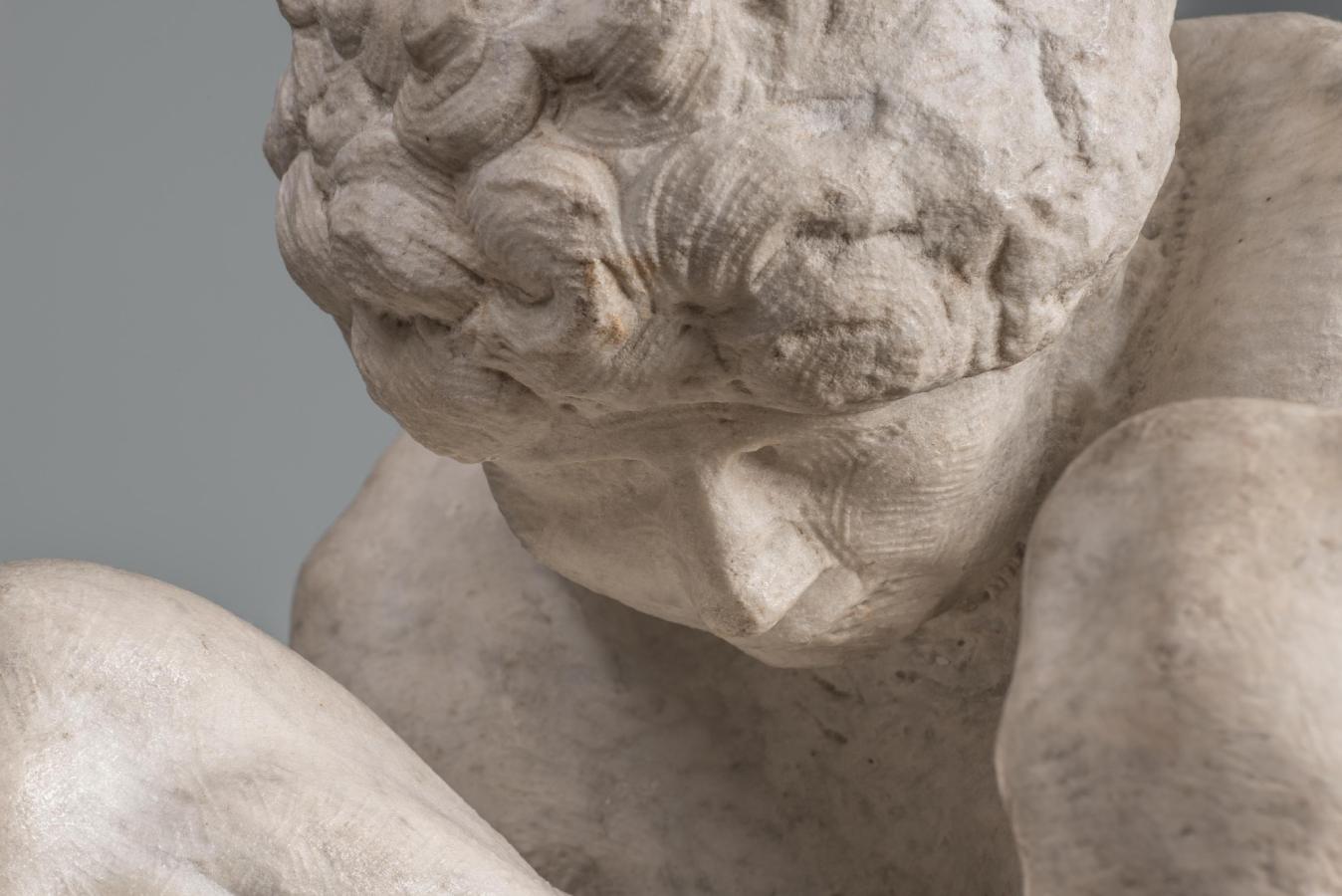Michelangelo (1475-1564)
Ragazzo accovacciato (Crouching Boy)
c.1530–1534
Marble, height: 54 cm
Hermitage Museum, Saint Petersburg
The Renaissance genius Michelangelo was an outstanding architect and poet, as well as the creator of the celebrated frescoes in the Vatican’s Sistine Chapel. But his chief calling was undoubtedly sculpture. The conception of the Hermitage work is connected with Michelangelo’s work on the Medici Chapel – the family sepulchre of the rulers of Florence. The view of the sculpture from the side especially brings out the physical power of the youth: the strong muscular legs, the tense arch of the curved back, the precisely indicated relief of the muscles. He belongs to the same race of titans as the famous David that the master created in his younger years. But in contrast to the Old Testament hero proudly towering above the enemy, this young man seems to be constrained by some invisible force, bowed down with his head lowered. The Crouching Boy was created in the 1530s soon after grave events that had shaken Italy: the sacking of Rome by the forces of Emperor Charles V, the fall of the republic and the restoration of Medici tyranny in Florence. Tragic images appeared at that time in Michelangelo’s works. His manner became ever more expressive. All over the rather rough surface of the marble we can see traces of the chisel; the face, hands and feet are only cursorily indicated. Some people are of the opinion that the sculpture is unfinished. It is a fact, however, that such incompleteness was a deliberate technique in Michelangelo’s late work – one of the many innovations with which he enriched the language of sculpture. (SHM)



